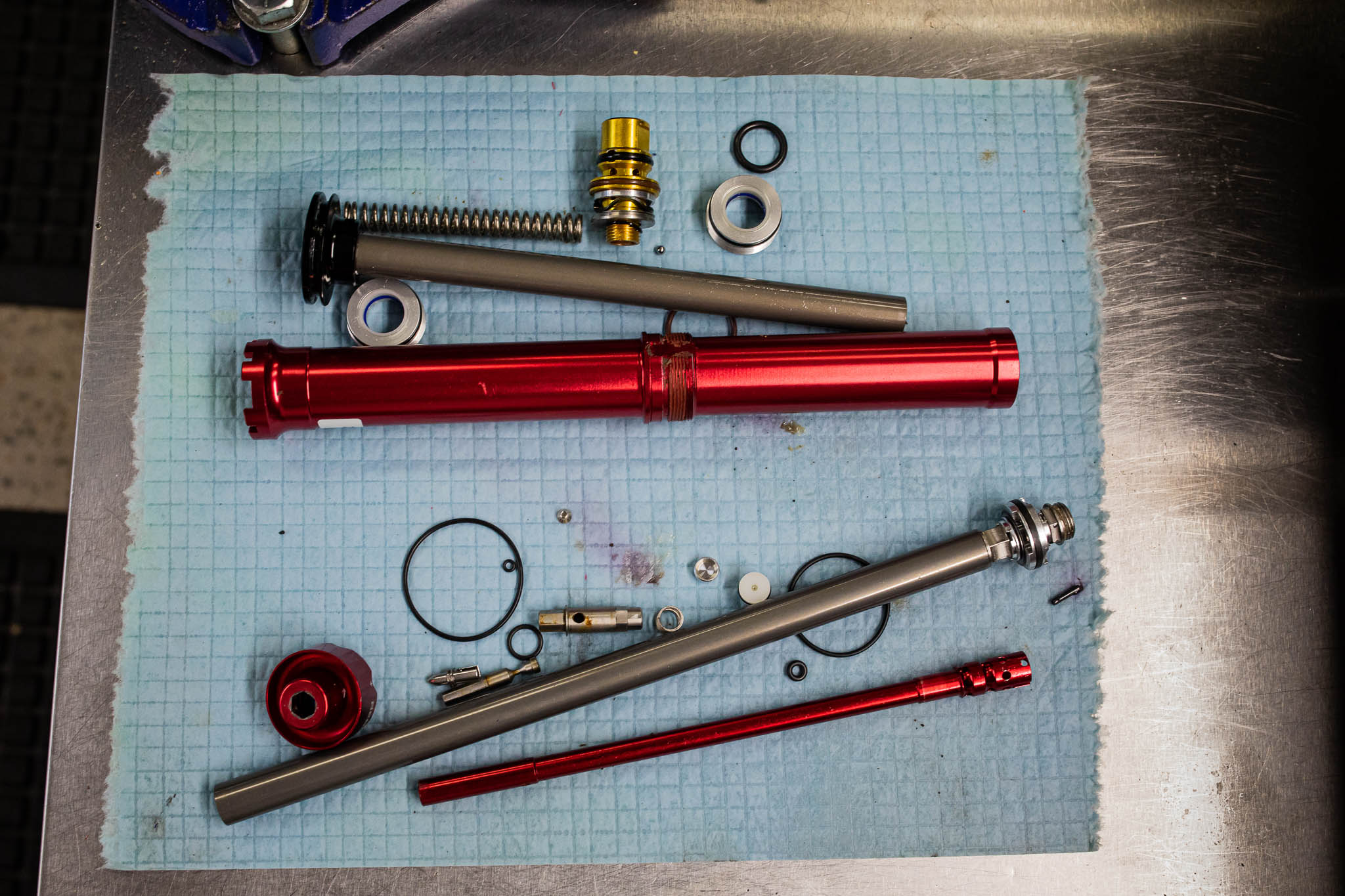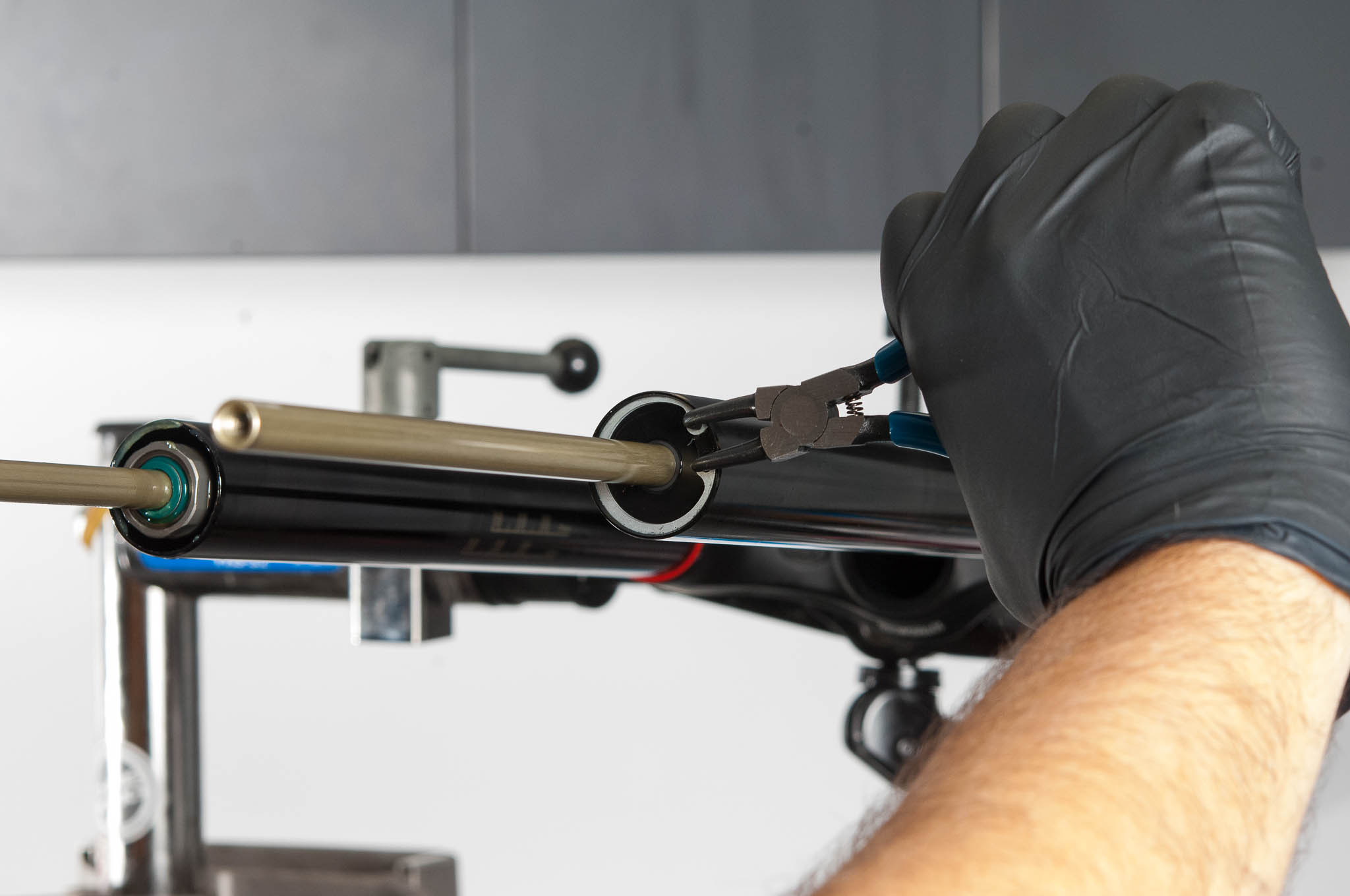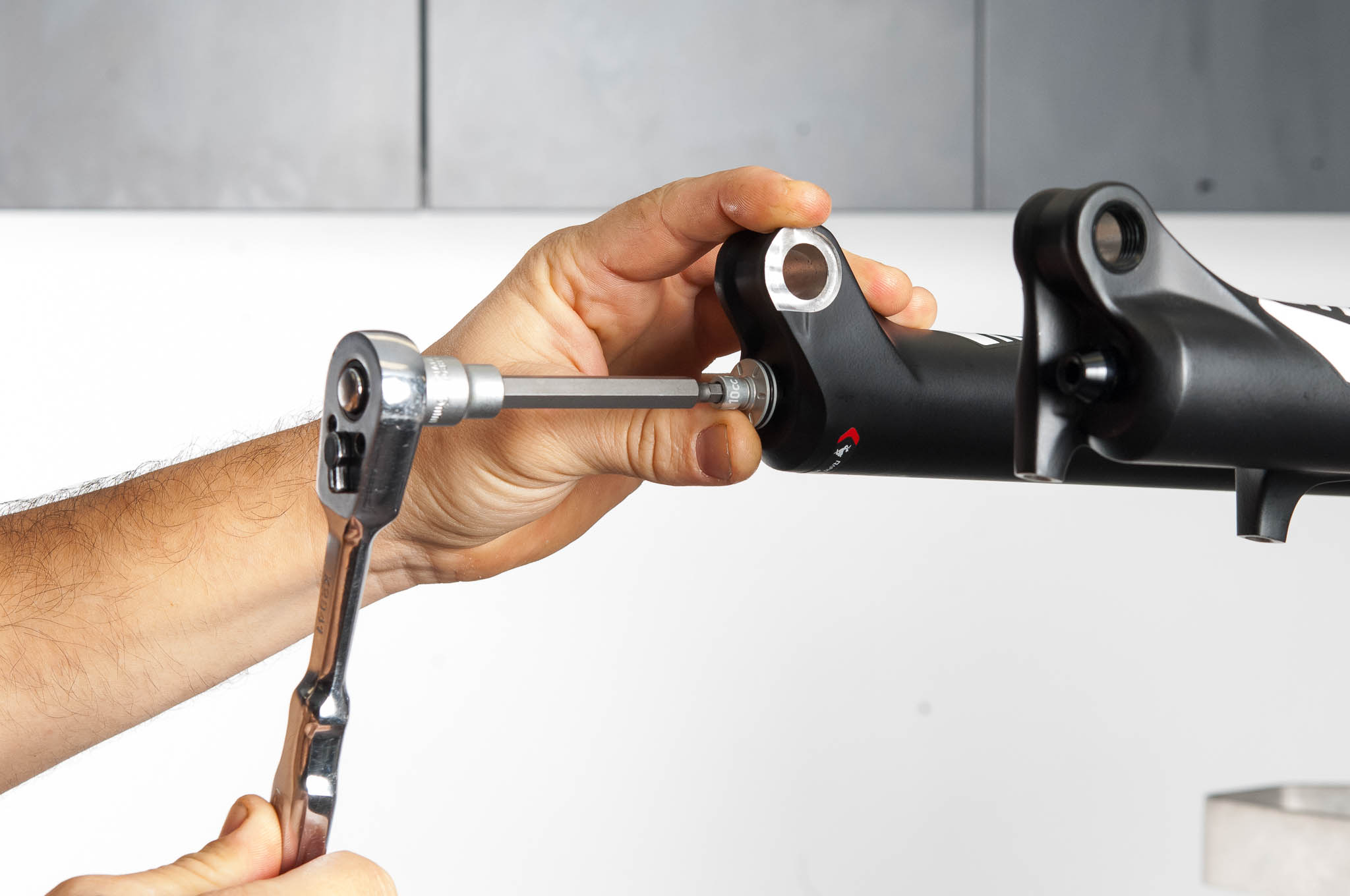Suspension 101: Why suspension needs servicing
To help refresh both your and our minds on how to get the most from your suspension, I sat down with some industry experts covering topics such as how to set up your bike from scratch, the importance of servicing and what someone means when they say their fork is ‘topping out.’
Words: Hayden Wright
Photos: Chris Herron, Colin Levitch

In August of 1990 Paul Turner released the first RockShox suspension component – the RS-1. Revolutionary at the time, it featured an air spring, two inches of travel and single handedly changed the way mountain bikes were ridden and developed for years to come. Some 32 years later, you can now purchase suspension right off the shelf that would outperform even the wildest dreams of any rider back in the early 90s. Adjustable spring curves, shaft speed specific rebound and compression adjustment, light weight, reliabality, lock-out levers, electronic management – these days we have it all.
Among all the latest developements in suspension engineering and technology, the basics are still there hiding behind a curtain of buzz words and shiny stanchion coatings. Understanding and adhering to the key basics to ensuring you are getting the most from your suspension are as relevant as ever and will ensure you are getting the latest from your suspension be it the latest Cane Creek coil shock, or a 32-year-old RS-1.
To help refresh both your and our minds on how to get the most from your suspension, I sat down with some industry experts covering topics such as how to set up your bike from scratch, the importance of servicing and what someone means when they say their fork is ‘topping out.’ It’s time to go back to school!
In the first of this multiple part series, we sit down with Aiden Lefmann, former World Cup XC racer turned owner and operator of Cyclinic. Aido has seen it all in his 18 years as a suspension technician, so we thought it best to quiz him on one of the most fundamental yet overlooked ways to get the most from your ride.
AMB: So Aido – what’s is the importance of suspension servicing and maintenance?

Aiden: Most of us will service our car as soon as the kilometre or time interval is reached, yet with mountain bike suspension, it’s not always that simple. Ideally, we would all be accurately tracking time or kilometres (which is easier said than done), when adhering to manufacturer service intervals. But there’s also still a large portion of owners that will rather wait for something to go wrong, instead of servicing regularly at the recommended intervals, which is ok too. However, the outcomes both from a performance and economical point of view can change dramatically.
Servicing at the recommended intervals (or sooner) will guarantee your suspension’s performance long term. Love it and it will love you back. That love translates to greater sensitivity, better handling, better capability, and of course – reliability. When the suspension is serviced, seals and fluids are replaced, and (if done regularly) that keeps the surfaces in which they ‘seal’, in as good as condition as possible, allowing friction-free action without the nasties, like oil leaking down the fork legs for example. Since a new seal cannot seal an imperfect surface, it makes sense to keep the surface perfect!
AMB: And what does a typical suspension service entail?
Aiden: In its basic form, suspension servicing involves the replacement of seals, glide rings, worn internal parts, bushings, and fluids. Now not every fork or shock requires all those things, but each and every service will involve at minimum fresh seals and fluids. There are varying levels of service, but every one of them involves new seals and fluids. For forks, a service will involve new dust seals and foam rings in the lower leg at a minimum, along with fresh bath oil. There’s little merit in removing lowers and only replacing bath oil since any contamination in the bath oil, is purely a result of seals failing to do their job – seal. Hence, forks dust seals and foam rings are a critical component to a forks’ performance capability and outcomes and are always replaced. As a fork service becomes more involved, the air spring seals are replaced and air shaft assemblies are deconstructed to be rebuilt with fresh seals. What surprises many, is that most common forks have over 10 air seals within the air shaft assembly, some of which are static, others more dynamic. Beyond the lower leg and air spring, there are two other critical parts of fork servicing. The fork’s damper will benefit from fresh seals and fluids, usually at the fork’s first major service, or when the manufacturer interval has been reached.

Damper servicing is generally far more involved, with many proprietary tools and processes that make it less DIY friendly. Obviously, this varies from brand to brand, and to what depth the DIY’er wants to dive, so to speak. It doesn’t stop there though. The fork’s chassis includes structural parts like the lower leg (which contains the 4 bushings), and the CSU (crown steerer unit). The bushings in the lower leg are a wearing part, and in many cases are replaced during major services. Bushings can have a big impact on the chassis’s ability to allow the damper and air spring to provide the suppleness goods, and where bushings are too tight, performance is drastically reduced. On the flipside, bushings that are too loose, are not properly supporting the CSU and can result in some unwanted feedback through the fork, usually in the form of a rattle, or loose headset feeling when riding.
AMB: And so rear shocks would have their own needs?
Aiden: Shock servicing will also involve the replacement of seals and fluids in basic terms. There are often two types of shock services. The first involves a basic ‘air can’ service for air shocks, where all the air seals and air can lubricants are replaced. This is generally very DIY friendly and should be done regularly between major services, usually only involving basic tooling and experience. The second is a major service involving both the shock’s damper, and the air can, and this will generally involve far more tools, and often multiple service kits with some degree of risk if you’re unsure of what lies ahead. Rear shock dampers are filled with oil, and pressurised, usually with nitrogen and up to 500psi in some cases. That damper is fully deconstructed in a major service, all surfaces are inspected for wear, and several seals and consumables are replaced before it is rebuilt, and ‘charged’ back to its intended pressure. Once the shock damper is tested on the dyno, the air can is then re-installed also with fresh seals and lubricant, and together that results in an air shock that functions and performs to the highest level for its intended use.

AMB: Right, so now we know what our hard-earned money is going towards – how often should your average rider sending their fork and shock off for some love?
Aiden: Very broadly speaking, a rider with an air shock should perform a basic service every 50-100hrs. Rear shock major services should be done closer to the 125-200hr mark depending on the brand. The same goes for a fork, and regular servicing will pay off in the long run as those surfaces are getting the golden treatment every time they are treated to fresh seals running along them.
AMB: What maintenance should a rider complete themselves pre or post ride to ensure suspension health between major services?
Aiden: If your mountain bike has air suspension, then you need to own a shock pump! Using a shock pump to check pressures on your fork or shock regularly is really important to ensure you’re getting the most out of your riding experience. Check the fork or shock’s setup guides and get some setup advice if needed so you can have a clear idea of what pressure you need to have in your fork and your shock, generally set based on a rider’s weight. It’s good to check this every month or so, and it only takes a minute.
It’s also good to have an idea of the number of ‘clicks’ of rebound and compression settings in your ideal suspension setup and have them written down somewhere. Keep those adjusters clear of caked-up dirt, and avoid high-pressure washing around those intricate shiny suspension adjustment knobs. It’s amazing how well water will find its way in when given the chance! Check the adjustments are moving freely and are providing the range of adjustments you would expect.
After a ride, we recommend wiping down the suspension with a damp cloth, especially around and behind the fork’s crown and a rear shocks dust seal, where dirt often seems to congregate. It is also a good habit to check for any stone chips or crash damage and have it addressed before it becomes catastrophic to the suspension’s long-term use. For example, the impact of a small stone chip on a suspension fork’s performance can be mitigated with some minor repair and maintenance, but if it is ignored, then it can become a major costly repair later as naturally, dirt will find its way in, and oil will find it’s way out. Consequently, the internal surfaces, bushings, and stanchions condition will rapidly deteriorate.
Any oil loss is generally not a good thing, so keep an eye out for that, especially when a fork or shock is nearing its manufacturer-recommended service interval. If a fork or shock feels dry and offers poor sensitivity, or its lockout feel has deteriorated, or its rebound seems faster than normal, it’s likely overdue for service. Modern suspension systems are lubricated from the inside, hence why you don’t see any of the big brands endorsing any external sprays or lubricants. If it feels dry and or lackluster in performance, then, again it is likely due for service.








